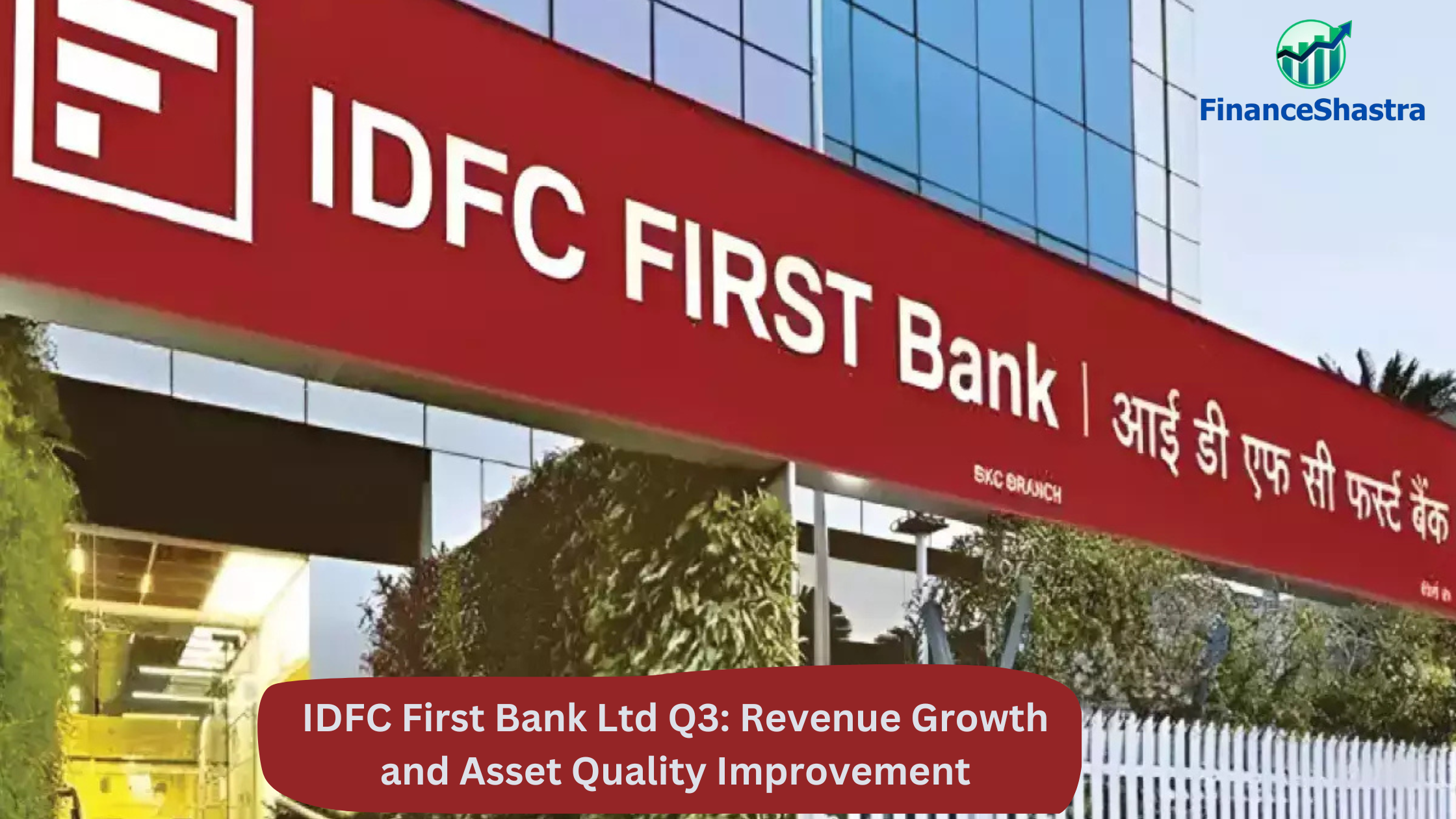IDFC First Bank Ltd Q3: Revenue Growth and Asset Quality Improvement
IDFC First Bank Ltd: Overview
IDFC First Bank Ltd. was established in December 2018 following the merger of IDFC Bank and Capital First, combining robust banking infrastructure with expertise in retail lending. The bank operates as a full-service financial institution offering a wide range of products and services across retail banking, wholesale banking, and other financial services. Its primary goal is to provide customer-centric solutions, leveraging technology to enhance efficiency and financial inclusion. It has made its focus to become retail demonstrated bank, with retail loans making up a significant portion of its loan book. Its product suite includes personal loans, home loans, vehicle loans, business loans, working capital finance, and rural financing, alongside liability products like savings accounts, current accounts, and fixed deposits. IDFC First Bank also offers credit cards, insurance, and investment products, along with treasury services. The bank has adopted a digital-first approach, ensuring seamless banking experiences through its mobile and internet banking platforms. The bank has seen a consistent growth in retail deposit book, led by its customer-friendly features such as zero-balance savings accounts and competitive interest rates. It has also focused on expanding its footprint with physical branches, micro-ATMs, and partnerships to drive financial inclusion across urban and rural markets. Additionally, the bank continues to strengthen its asset quality through prudent underwriting practices and efficient risk management frameworks.
Latest Stock News
Customer deposits for the bank grew robustly by 28.8% YoY, reaching ₹227,316 crore, with retail deposits increasing by 29.6% YoY to ₹180,752 crore. CASA deposits also saw strong growth of 32.3% YoY, driven by a 32.9% rise in savings accounts and a 28.9% increase in current accounts. The cost of deposits remained stable QoQ at 6.38%. Excluding the microfinance (MFI) business, the rest of the bank’s loan book—comprising corporate, retail, MSME, and rural loans remained steady. The bank’s gross non-performing assets (GNPA) marginally rose by 2 bps QoQ to 1.94%, while net non-performing assets (NNPA) increased by 4 bps QoQ to 0.52%.
Excluding the microfinance book, GNPA and NNPA stood at 1.81% and 0.49%, respectively, in Q3 FY25, compared to 1.88% and 0.48% in Q2 FY25. The SMA 1+2 ratio for the retail, rural, and MSME book but it is excluding microfinance improved by 3 bps QoQ, declining from 0.85% to 0.82%. GNPA and NNPA for this segment remained stable at 1.46% and 0.56%, respectively. Gross slippages for Q3 FY25 totalled ₹2,192 crore, up ₹162 crore from ₹2,031 crore in Q2 FY25, primarily driven by slippages in the MFI business, which accounted for ₹143 crore of the increase.
The provision coverage ratio was steady at 73.6%. The bank has continued to reduce its microfinance portfolio, which declined from 5.6% of the overall loan book in September 2024 to 4.8% in December 2024. No provision buffers were utilized during Q3 FY25. Provisions for the quarter stood at ₹1,338 crore, primarily due to higher slippages in the microfinance book. Despite this, the bank’s overall financial performance reflects stability and continued focus on reducing exposure to high-risk segments.
Q3 FY25 Earnings
- Revenue of ₹9343 crore in Q3 FY25 up by 18.6% YoY from ₹7880 crore in Q3 FY24.
- Financing loss of ₹-1358 crore in this quarter at a margin of -15% compared to -7% in Q3 FY24.
- Profit of ₹340 crore in this quarter compared to a ₹732 crore profit in Q3 FY24.

